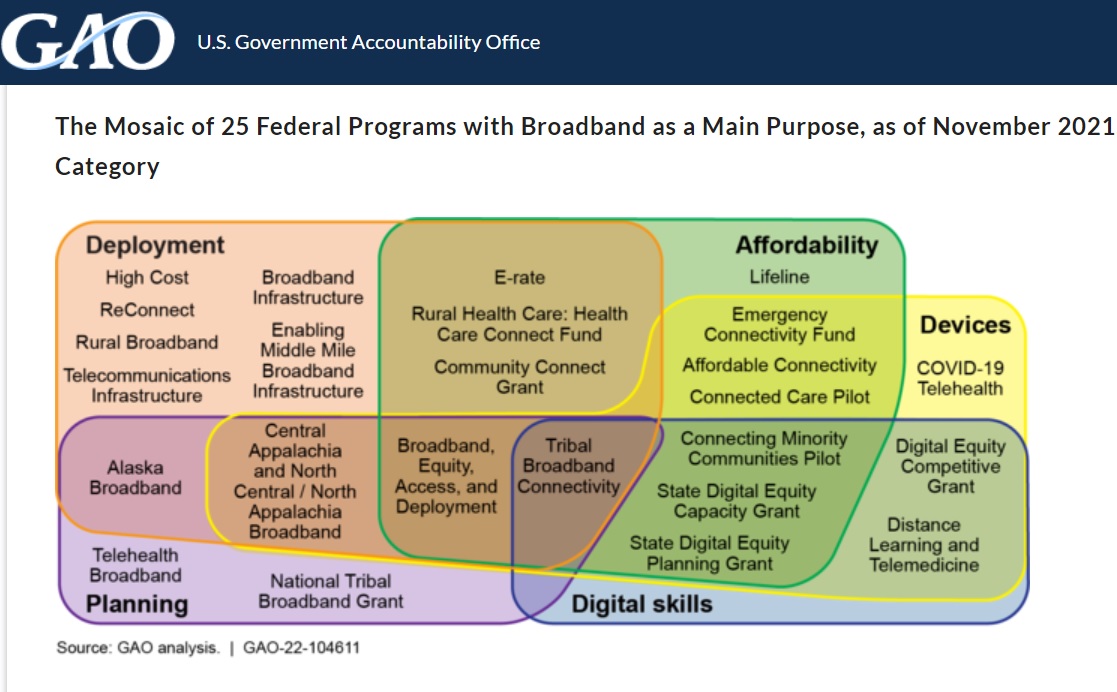GAO: U.S. Lacks Synchronized Broadband Plan
White House undecided on whether one is needed

The Government Accountability Office is recommending that the U.S. get its broadband subsidy act together.
GAO said Congress needs to come up with a national broadband plan to rectify what it says is a “fragmented, overlapping patchwork” of broadband accessibility funding, though the White House has not decided whether it plans to do that or not.
That is according to a new GAO report that identified more than 100 federal programs — overseen by 15 agencies — that can be used to expand access.
The National Telecommunications & Information Administration is administering the major share of that.
GAO recommends “synchronizing” those federal efforts through a “national broadband strategy.”
Also: FCC Launches Broadband Plan Rulemakings
"The U.S. broadband efforts are not guided by a national strategy with clear roles, goals, objectives, and performance measures," the GAO report said.
Multichannel Newsletter
The smarter way to stay on top of the multichannel video marketplace. Sign up below.
The FCC came up with its own national broadband plan more than a decade ago — under Julius Genachowski, chairman during President Barack Obama‘s first term — but the GAO said that there are some statutory limitations on aligning the current “mosaic” of programs, including differing definitions of eligible areas and broadband speeds.
In 2020, Sen. Ed Markey (D-Mass.) called for an update of that 2010 National Broadband Plan, and Blair Levin, the architect of the plan under Genachowski, agreed, saying it was long overdue.
And while the NTIA in 2018 led an interagency group that reviewed those different definitions, it did not identify which statutes limited how the programs could be aligned or recommend any changes.
The GAO said change is necessary. “Without legislative proposals for Congress to consider, agencies may continue to face limitations in aligning programs to close the digital divide,” GAO concluded.
GAO's conclusions were based on its own analysis combined with interviews with stakeholders including ISPs and officials.
The GAO offers three recommendations for the new broadband strategy, two of which the NTIA, which is the White House's chief communications policy arm, said apply to it and which it supports:
- The NTIA should identify key statutory limitations — what it said the agency did not do in 2018 under then-President Donald Trump — and prepare a report to Congress;
- The NTIA should solicit and incorporate regular feedback when updating the BroadbandUSA Federal Funding Guide; and
- The Executive Office of the President should “develop and implement a national broadband strategy.”
NTIA did not address the third recommendation and the White House did not jump at the suggestion.
“The Executive Office of the President has not decided if a national strategy is needed,” GOA said, adding somewhat pointedly, “but it is well-positioned to develop and implement one.” ■
Contributing editor John Eggerton has been an editor and/or writer on media regulation, legislation and policy for over four decades, including covering the FCC, FTC, Congress, the major media trade associations, and the federal courts. In addition to Multichannel News and Broadcasting + Cable, his work has appeared in Radio World, TV Technology, TV Fax, This Week in Consumer Electronics, Variety and the Encyclopedia Britannica.

